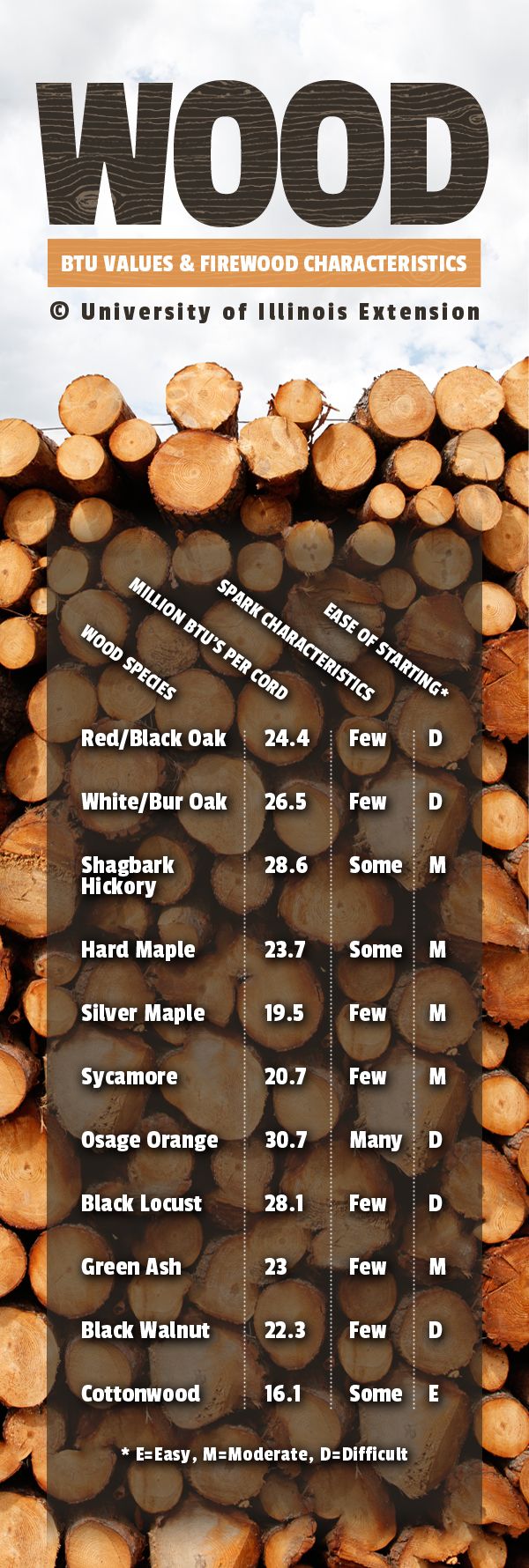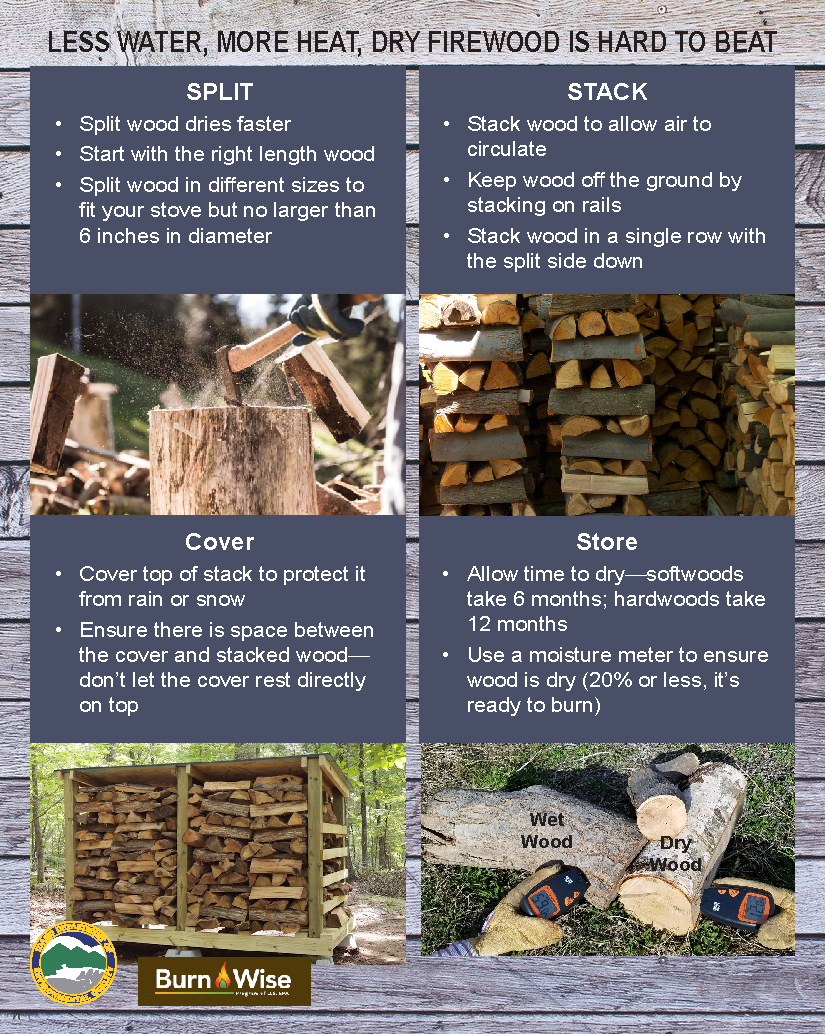Firewood moisture content chart provides ideal levels for seasoned firewood, critical for efficient burning. Understanding moisture content’s importance is key to ensuring optimal firewood performance.
Properly seasoned firewood has a moisture content of around 20% or less, which helps prevent excess smoke, creosote buildup, and inefficient burning. A moisture meter can accurately measure the moisture levels of firewood before use, ensuring a clean and hot burn.
Checking and maintaining appropriate moisture content is essential for safe and effective wood burning practices. Remember that well-seasoned firewood with the right moisture content can make all the difference in achieving a warm and cozy fire. By following these guidelines, you can enjoy a more enjoyable and efficient firewood burning experience.


Credit: www.thestoveyard.com
Understanding Firewood Moisture Content
Understanding firewood moisture content is crucial for efficient burning. By referring to a firewood moisture content chart, you can determine the ideal moisture levels for your firewood, ensuring optimal heat output and minimal creosote buildup in your fireplace or wood stove.
The Importance Of Firewood Moisture Content
Understanding the crucial role of firewood moisture content in your wood-burning endeavors is essential for efficient and safe heating.
Effects Of High And Low Moisture Content
High moisture content leads to inefficient burning, excessive smoke, and increased creosote buildup. Low moisture content, on the other hand, allows for cleaner combustion and better heat output.
Measuring Firewood Moisture Content
When it comes to efficient burning and preventing dangerous creosote buildup in your chimney, measuring the moisture content of your firewood is crucial. Moisture content is the amount of water present in the wood, which directly affects its ability to burn cleanly. Here, we will delve into the methods for measuring moisture content and the ideal levels for different types of firewood.
Methods For Measuring Moisture Content
- Moisture Meters: These handheld devices provide quick and accurate readings of wood moisture levels.
- Soap Test: Rubbing a dry bar of soap on the end of a log can indicate excess moisture if it creates suds.
- Visual Inspection: Cracks, splits, and lightweight logs are signs of well-seasoned, low-moisture firewood.
Ideal Moisture Levels For Different Types Of Firewood
| Wood Type | Ideal Moisture Content (%) |
|---|---|
| Oak | 15-20% |
| Pine | 20-25% |
| Maple | 20-25% |
Seasoning Firewood For Optimal Moisture Content
Seasoning firewood is a crucial task to ensure optimal moisture content for efficient burning. The process involves drying freshly cut wood to reduce its moisture content, which requires time and proper handling. Achieving the ideal moisture content is vital for creating a clean-burning, long-lasting flame and reducing the buildup of creosote in chimneys.
Process Of Seasoning Firewood
To properly begin the seasoning process, start by splitting the wood to increase its surface area for faster drying. Stack the wood in a single row, with space between the pieces to allow for air circulation. It’s important to place the wood on a raised platform or stacking it off the ground to prevent moisture absorption from the soil. Cover the top of the stack to protect the wood from rain but leave the sides open for adequate airflow.
Tips For Properly Seasoning Firewood
- Choose hardwoods over softwoods for faster drying and optimal heat output.
- Split wood to smaller pieces to speed up the seasoning process.
- Try to store the wood in a sunny and windy area to aid in the drying process.
- Utilize a moisture meter to ensure the wood reaches the ideal moisture content of around 15-20%.
- Regularly check the wood for its moisture content and adjust the storage conditions as needed.

Credit: www.deq.idaho.gov
Utilizing Moisture Content For Efficient Burning
When it comes to burning firewood, the moisture content plays a crucial role in determining the efficiency of the burn. High moisture content in firewood not only reduces heat output but also increases the environmental impact. By understanding and utilizing the moisture content of firewood, you can maximize heat output and reduce environmental impact.
Maximizing Heat Output
To maximize heat output, it is important to use firewood with low moisture content. Green or freshly cut wood typically has a moisture content of 40% or higher, which means a significant portion of the energy is wasted in evaporating the moisture instead of producing heat. On the other hand, seasoned firewood with a moisture content of around 20% or lower burns more efficiently, releasing more heat and less smoke. It is important to ensure that firewood is properly seasoned before use to achieve optimal heat output.
Reducing Environmental Impact
Reducing the environmental impact of burning firewood involves using wood with lower moisture content. High moisture content not only decreases heat output but also increases the emission of pollutants, such as particulate matter and volatile organic compounds (VOCs). These pollutants contribute to air pollution and can have adverse effects on human health. By utilizing firewood with lower moisture content, you can minimize the release of these pollutants and reduce your environmental footprint.
Properly understanding and utilizing the moisture content of firewood is essential for efficient and clean burning. It is recommended to use a moisture meter to measure the moisture content of firewood before using it. This allows you to make informed decisions about the wood you choose for your fire, ensuring maximum heat output and minimal environmental impact.
Maintaining Optimal Firewood Moisture Content
When it comes to maintaining optimal firewood moisture content, proper storage practices and regular monitoring are crucial. Firewood that is too wet or too dry can lead to inefficient burning, excessive smoke, and poor heat output. By following these guidelines, you can ensure that your firewood is in the ideal moisture range for efficient and effective burning.
Proper Storage Practices
Storing firewood correctly is the first step towards maintaining optimal moisture content. Here are some best practices to follow:
- Store firewood in a well-ventilated area to allow for proper airflow. This helps in the seasoning process and prevents mold and fungi growth.
- Elevate the firewood off the ground using pallets or a firewood rack to prevent moisture absorption from the soil.
- Cover the top of the firewood stack with a waterproof tarp or roof to protect it from rain and snow.
- Ensure that there is enough space between firewood logs for air circulation.
Regular Monitoring And Adjustments
Regularly monitoring the moisture content of your firewood is essential for maintaining optimal burning conditions. Here’s how you can do it:
- Invest in a moisture meter specifically designed for firewood. These meters provide accurate readings and are easy to use.
- Check the moisture content of your firewood before burning. The ideal moisture range for firewood is between 15% and 20%.
- If the moisture content is too high, continue the seasoning process by allowing the firewood to dry for a longer period of time.
- If the moisture content is too low, consider spraying the firewood with water to increase the moisture level.
- Make adjustments as needed, depending on the readings from the moisture meter.
Maintaining the optimal firewood moisture content is essential for a successful and efficient fire. By following proper storage practices and regularly monitoring and adjusting the moisture level, you can ensure that your firewood burns cleanly and provides ample heat for a cozy and comfortable fire.

Credit: www.reddit.com
Frequently Asked Questions On Firewood Moisture Content Chart
What Is Ideal Moisture Content For Firewood?
The ideal moisture content for firewood is around 20% to 25%. Moisture below 20% burns well.
Can You Burn 30% Moisture Wood?
Burning 30% moisture wood is not recommended as it can cause excessive smoke and inefficient burning.
How Dry Is Too Dry For Firewood?
Firewood should have a moisture content of 15-20% for optimal burning. Wood that is too dry can burn too quickly and creates less heat.
What Should A Moisture Meter Read For Dry Firewood?
A moisture meter should read around 20% or lower for dry firewood. Higher moisture levels can result in less efficient burning and difficulty getting a fire started. It is important to properly season firewood to ensure it reaches the ideal moisture content for optimal performance.
How Does Firewood Moisture Content Affect Burning Efficiency?
Firewood with high moisture content burns less efficiently and produces more smoke and creosote buildup in the chimney.
Conclusion
Understanding the moisture content of firewood is crucial for efficient burning and heat production. Properly seasoned firewood with the ideal moisture levels ensures cleaner air, reduced creosote buildup, and better overall performance for wood-burning appliances. By referring to a firewood moisture content chart, you can enhance your firewood selection and storage practices, resulting in a more enjoyable and sustainable wood-burning experience.